Have you ever wondered how your computer manages all its devices? It works like a busy conductor leading a symphony. Windows 10 has a special tool called the device manager. This tool keeps everything in harmony. It helps your computer know which parts, like your mouse or printer, are working perfectly.
Many people don’t realize how important the device manager is. Did you know that with just a few clicks, you can see all the devices connected to your computer? It’s true! With Windows 10, you can easily find and fix problems. This means your computer runs smoothly, just like a well-oiled machine.
In this article, we will explore the device manager for Windows 10. You will learn how to use it, why it’s useful, and some fun tips to make your computer life easier. Are you ready to unlock the secrets of your computer? Let’s dive in!
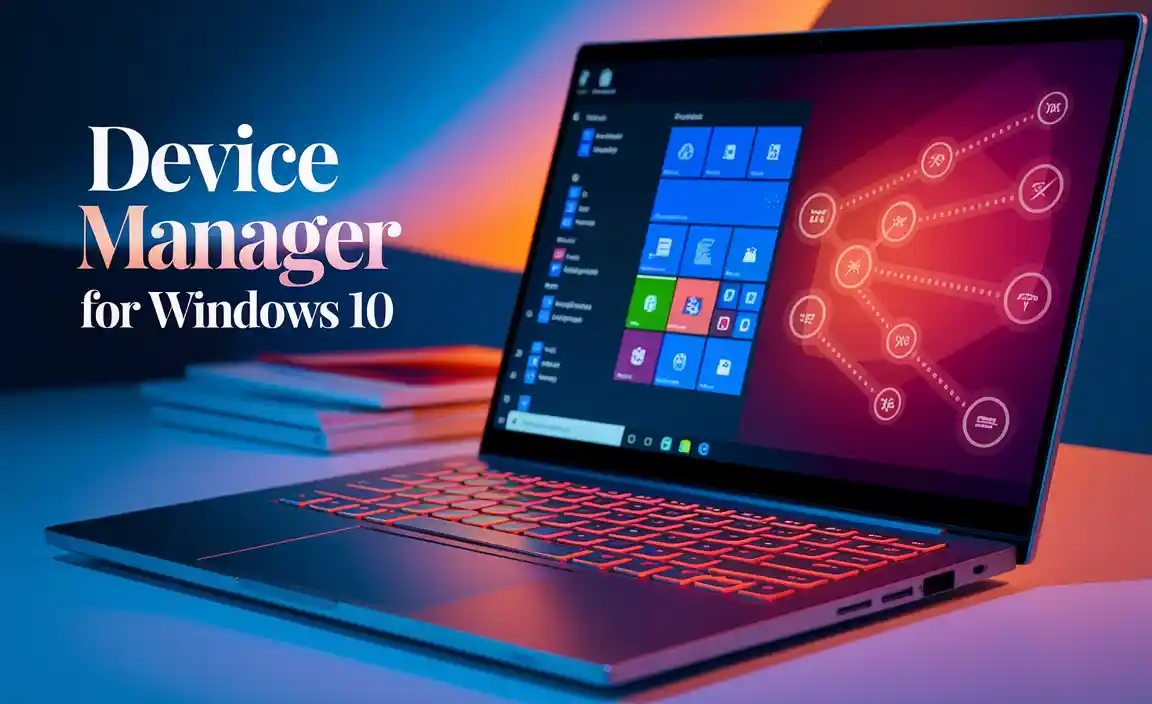
Essential Guide To Device Manager For Windows 10 Users
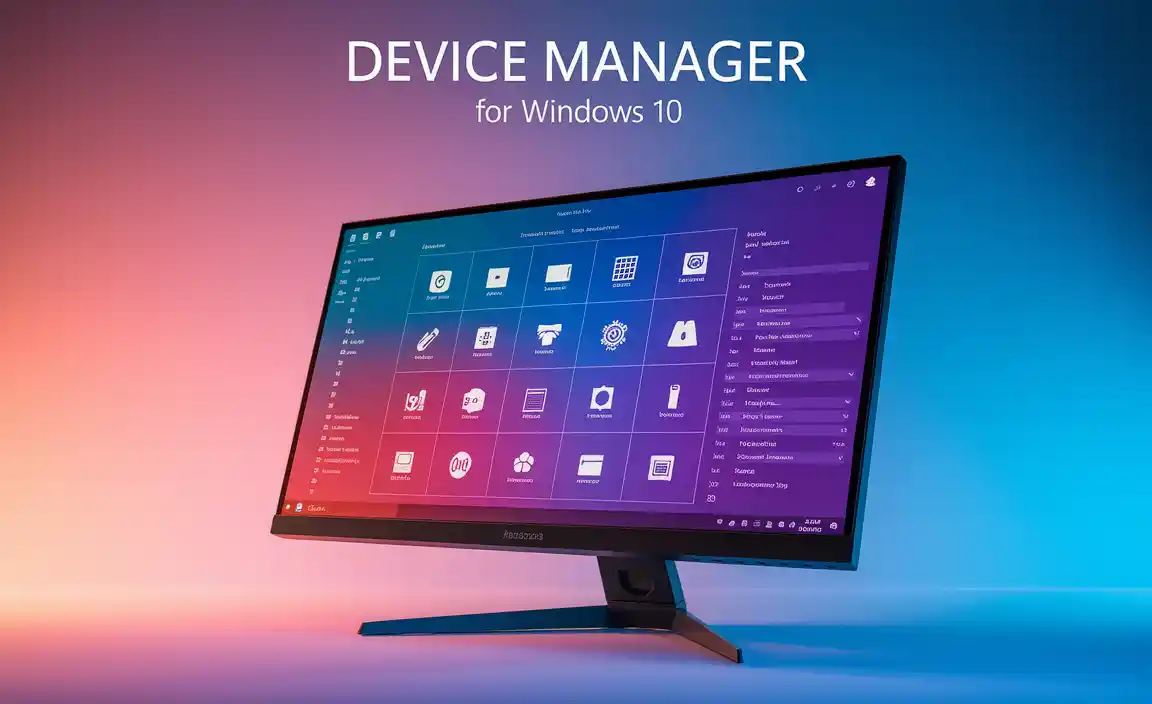
How to Access Device Manager in Windows 10
Stepbystep instructions to open Device Manager. Different methods to access it (e.g., via Control Panel, Settings, and Run dialog).
Ready to dive into the world of device management? First, let’s find that elusive Device Manager. You can start by tapping the Windows key + X. Voila! A menu appears—choose Device Manager. Alternatively, you can access it through the Control Panel by typing “Control Panel” in the search bar. For the tech-savvy, hit Windows key + R, type “devmgmt.msc,” and press Enter. Below is a quick table on how to access it:
| Method | Steps |
|---|---|
| Windows Key + X | Select Device Manager |
| Control Panel | Search and open it, then click Device Manager |
| Run Dialog | Press Windows + R, type “devmgmt.msc”, hit Enter |
Now you’re set! Explore and manage your devices with ease. Remember, even the quirkiest tech problems can sometimes be fixed with a restart—and a little help from Device Manager!
Understanding Device Manager Interface
Description of the layout and components of the Device Manager window. Explanation of various categories and device types displayed.
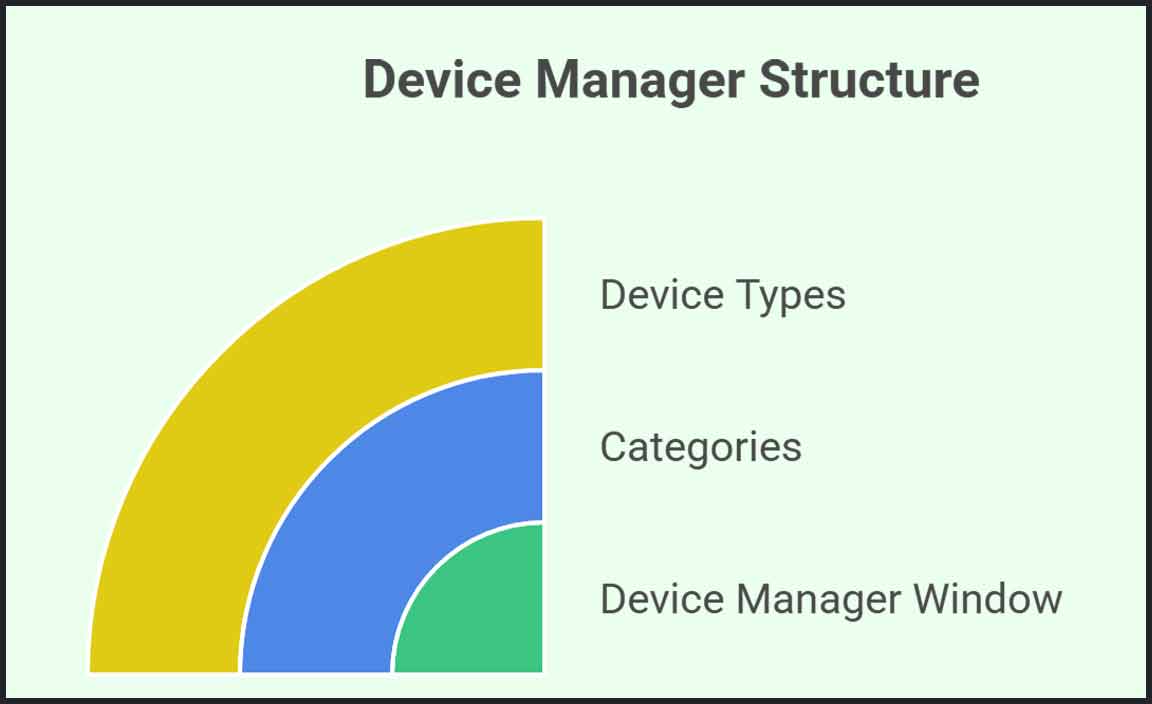
The Device Manager window looks like a cozy tech living room. It shows all your computer’s gadgets in a neat list. On the left, you’ll find categories like Display adapters or Sound, video, and game controllers. Click on each category to spill the beans on individual devices. Every little icon is like a badge of honor for your hardware. Just remember, a happy computer is a well-managed computer!
| Category | Device Types |
|---|---|
| Display Adapters | Graphics Cards |
| Sound, Video and Game Controllers | Speakers, Microphones, Gamepads |
| Network Adapters | Wi-Fi Cards, Ethernet Cards |
Troubleshooting Common Device Issues
Identifying issues using Device Manager (e.g., yellow exclamation marks, red Xs). Stepbystep solutions for common problems (e.g., updating drivers, disabling/enabling devices).
If your devices are acting strange, don’t panic! The Device Manager is here to save the day. Look for yellow exclamation marks or red Xs next to your devices. These colorful signs mean something is wrong, like a driver needing an update. No cape required! Just follow these steps:
| Issue | Solution |
|---|---|
| Yellow Exclamation Mark | Update the driver |
| Red X | Enable the device |
By keeping an eye on these little tags, you can fix common problems with ease. Now your devices can work like magic again instead of throwing a tantrum!
Managing Device Drivers
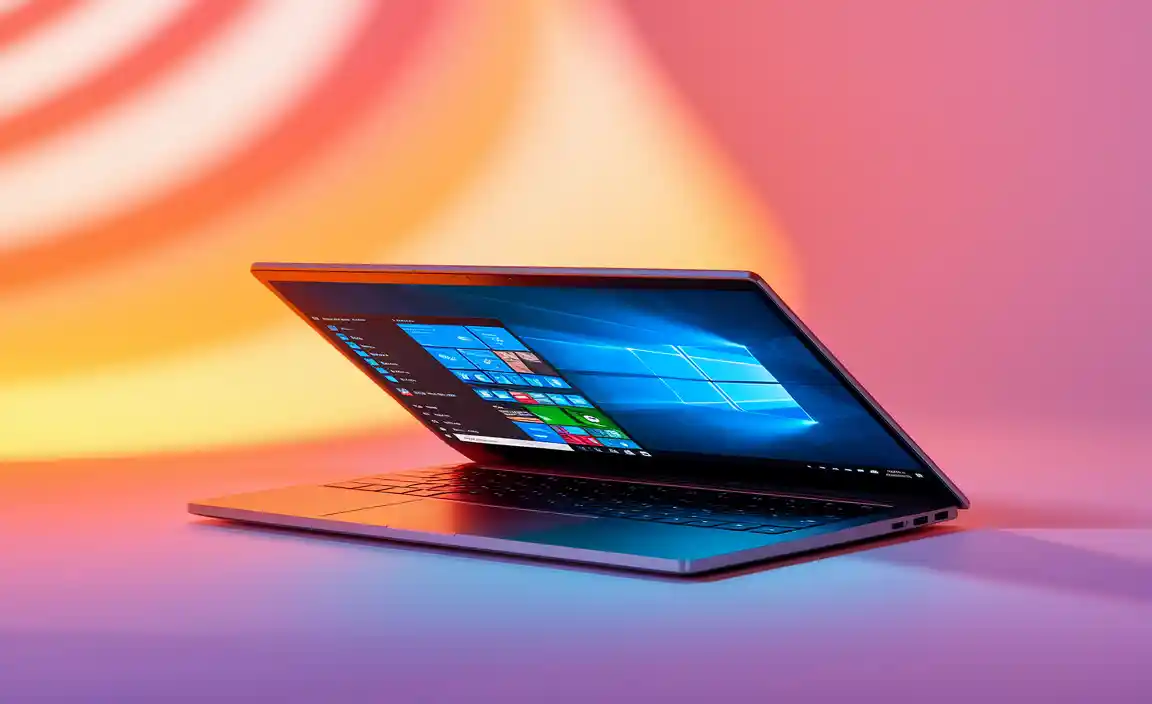
How to update, uninstall, and roll back drivers through Device Manager. Importance of keeping drivers uptodate for optimal device performance.
Updating your drivers is like giving a high-five to your computer! When using Device Manager, you can easily update, uninstall, or roll back drivers. To update, right-click the driver and choose “Update Driver.” Want to remove a stubborn driver? Skip the drama; just select “Uninstall.” If an update goes south, hit “Roll Back” to return to the previous version.
Keeping your drivers updated helps your devices perform their best. Outdated drivers can make things slower than a turtle in molasses! So, keep your gear fresh for smoother operations.
| Action | Steps |
|---|---|
| Update Driver | Right-click > Update Driver |
| Uninstall Driver | Right-click > Uninstall |
| Roll Back Driver | Right-click > Roll Back |
Advanced Tips for Power Users
Utilizing Device Manager for hardware diagnostics and testing. Using Device Manager in conjunction with other tools for enhanced troubleshooting.
Power users can unlock hidden features using Device Manager. It’s like finding a secret level in a video game! First, run hardware diagnostics to spot issues. No more guessing! Device Manager helps you check if your devices are working or if they need a little TLC. Combine it with other tools to level up your troubleshooting skills. Think of it as your tech detective toolkit.
| Tool | Purpose |
|---|---|
| Device Manager | Manages and checks hardware |
| Event Viewer | Shows system logs |
| Performance Monitor | Tracks performance metrics |
Using these tools together can make you a troubleshooting master. Remember, every tech problem has a solution; sometimes, you just need to dig a little deeper!
Best Practices for Using Device Manager
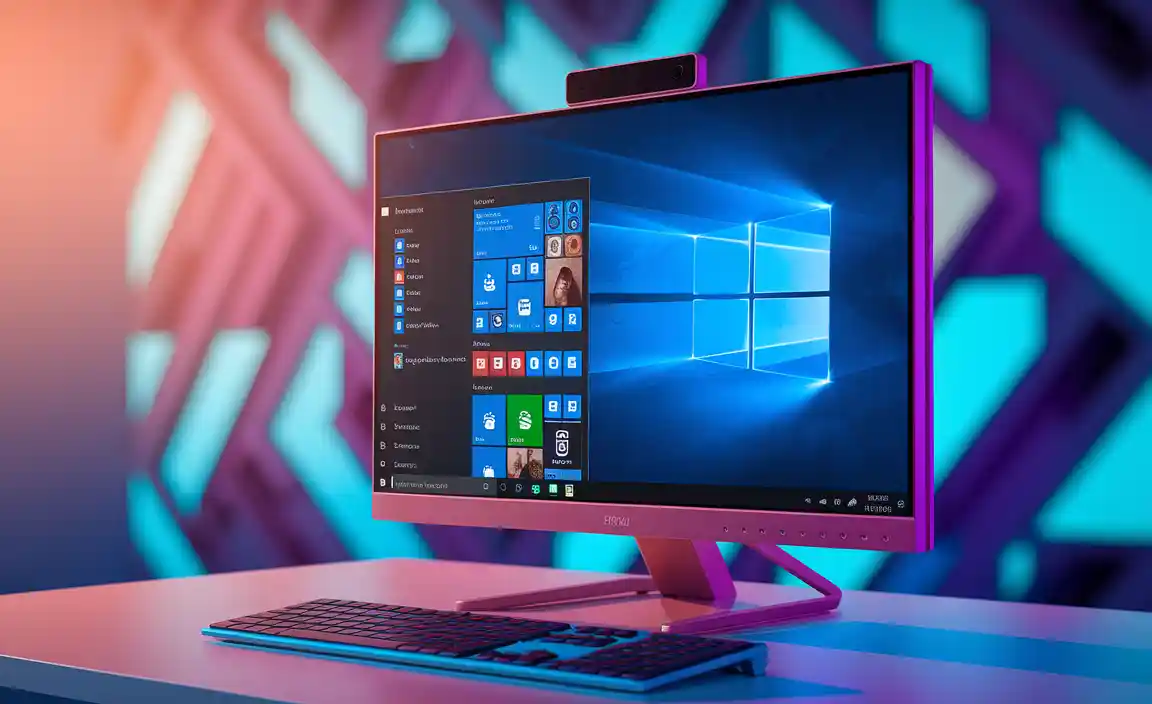
Tips for maintaining device performance and stability in Windows 10. Recommended periodic checks and maintenance tasks for users.
Keeping your device running smoothly is like feeding your pet; it needs care! To maintain performance and stability in Windows 10, check your Device Manager often. Look for any yellow triangles; they are the ‘oopsie!’ signs. Regularly update drivers to keep everything happy and fast. Consider using a schedule, like checking every month—who doesn’t love a good calendar alert? Here’s a handy table for you:
| Task | Frequency |
|---|---|
| Update Drivers | Monthly |
| Check for Errors | Every 3 months |
| Uninstall Old Devices | Twice a year |
Keep an eye on your system’s health. A little maintenance goes a long way in preventing device drama!
Conclusion
In conclusion, the Device Manager for Windows 10 lets you manage your computer’s hardware easily. You can update drivers, troubleshoot issues, and disable devices. It’s a handy tool for keeping your system running smoothly. Explore Device Manager today to solve problems and improve performance. For deeper understanding, check out online tutorials or guides to help you along the way!
FAQs
Here Are Five Related Questions On The Topic Of Device Manager For Windows 10:
Sure! Device Manager is a tool on Windows 10 that helps us see all the devices connected to our computer. This includes things like printers, mice, and keyboards. If a device isn’t working, we can use Device Manager to find out why. We can also update drivers, which are like special instructions that help our devices work properly. It’s a helpful way to keep everything running smoothly!
Sure! Just ask your question, and I’ll be happy to answer it for you.
What Steps Do I Need To Follow To Open Device Manager In Windows 10?
To open Device Manager in Windows 10, first, click on the “Start” button. Then, type “Device Manager” in the search box. You will see it pop up in the list. Click on it, and the Device Manager will open. Now, you can see all the devices connected to your computer!
How Can I Update Device Drivers Using Device Manager In Windows 10?
To update device drivers in Windows 10, first click the Start button. Then, type “Device Manager” and press Enter. Find the device you want to update, like a printer or mouse. Right-click on it and choose “Update driver.” Follow the instructions on the screen, and your driver will update!
What Should I Do If A Device In Device Manager Shows A Yellow Exclamation Mark?
If a device has a yellow exclamation mark in Device Manager, don’t worry! First, try restarting your computer. This can fix many problems. If it still shows the mark, you can right-click on the device and choose “Update driver.” If that doesn’t work, check the manufacturer’s website for help.
How Can I Disable Or Enable A Device Using Device Manager In Windows 10?
To disable or enable a device in Windows 10, first, open the Device Manager. You can find it by searching for “Device Manager” in the Start menu. Then, find the device you want to change. Right-click on it, and choose “Disable device” to turn it off or “Enable device” to turn it back on. That’s it!
Are There Any Differences In The Functionality Of Device Manager Between Windows And Earlier Versions Of Windows?
Yes, there are some differences in Device Manager between Windows and earlier versions. In newer Windows, it has a cleaner look and works faster. You can easily find and fix problems with your devices. Also, it shows more details about each device, like its status. Overall, it’s easier for you to manage your devices now!
Resource:
-
Guide to Understanding Device Drivers: https://www.howtogeek.com/333542/what-is-a-device-driver/
-
Windows 10 Support and Troubleshooting: https://support.microsoft.com/en-us/help/4028443/windows-10-troubleshoot-problems
-
Beginner’s Guide to Using the Run Dialog in Windows: https://www.lifewire.com/run-command-dialog-box-5186801
-
How to Use Event Viewer in Windows 10: https://www.makeuseof.com/tag/event-viewer-windows/
